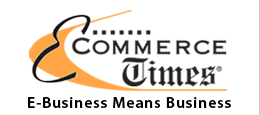Measuring the Profitability of SaaS
Last month, Bruce Richardson of AMR Research published a provocative commentary entitled, “SaaS and the Elusive Path to Profitability” that heightened the debate regarding the financial viability of the Software-as-a-Service (SaaS) model.
Bruce’s column elaborated on a presentation he gave at SaaScon 2008 entitled, “Balancing Customer Acquisition Costs and Elusive Profitability.” The talk was driven by a question which Bruce claims to ask numerous software and service companies on a regular basis: “Do you know how much it costs to win a dollar of new business?”
Not surprisingly, Bruce has found that most SaaS companies are losing money acquiring new business in hopes of gaining long-term profitability over the life of the customer relationship. This has always been the logic behind the ‘land and expand’ tactics which are at the heart of almost every SaaS company’s go-to-market strategy.
In order to make his case, Bruce referred to recent annual and quarterly financial reports from the major publicly traded SaaS companies—salesforce.com, RightNow Technologies, NetSuite, SuccessFactors, and Taleo. In every case except Taleo, Bruce found high sales and marketing, R&D and G&A costs resulting in low or negative GAAP operating income.
What his analysis fails to do is fully recognize the trends lines, acknowledge the growing success rates and admit that many of his points simply reflect the stage of life of the SaaS movement.
Ironically, he identifies numerous operating improvements that have been achieved by each of the publicly traded companies, but treats them like they are simply financial compromises rather than the gains which come from the fundamental economies of scale of the SaaS model in a rapidly growing market.
For instance, if you look at the financial results of each of the companies Bruce identified over the past year they are all showing reductions in their relative sales and marketing, R&D and G&A costs. This is leading to lower customer acquisition costs for each of the companies.
Like Bruce, I spend a lot of time talking with senior executives at SaaS companies. While they all admit that the SaaS business isn’t easy, they have also told the SaaS market is evolving more quickly than they expected.
This trend has been confirmed by a number of industry studies which have reinforced THINKstrategies’ research and consulting work over the last 3-4 years.
Not only are companies of all sizes increasingly interested in SaaS alternatives, but they are accelerating their customer decision-making processes and reducing the salescycles for SaaS vendors. They are also signing bigger deals which promise greater margins for the SaaS providers.
For instance, salesforce.com has seen a steady rise in its average contract size and recently won a 55,000-user deal with Misys, a financial software provider. And, this deal pales in comparison to Workday’s announcement last week of a 200,000-user deal with global electronic components manufacturer Flextronics.
I had the privilege of talking to Workday executives prior to the Flextronics announcement who admitted that they’ve been surprised with the level of interest in Workday’s SaaS solutions and the speed at which customers are willing to make a purchase decision.
RightNow even reported to Bruce that most of its customers will make 5-6 additional purchases and spend 8x their initial purchase value over a three-year period.
Ironically, the SaaS financial model is built on the same economic principles which have been at the heart of the IT market research business since the 1970s—the annuity of predictable subscription services.
If you look at the quarterly and annual financial reports of Gartner or Forrester, as well as those of the privately-held firms, you’ll find that their most important performance metric is their annual contract value (ACV). This is the same metric SaaS companies use to measure their performance.
In fairness, Bruce identifies Taleo as an example of the profit potential of the SaaS model. He credits the company’s targeted sales and marketing approach as the major reason for its jump from an operating loss in 2006 to a $3.7M profit last year. I’ve seen the same tactic used by privately-held SaaS companies, such as Intacct, to significantly impact their financial performance.
While disciplined management deserves some of the credit, I’m sure Taleo’s executives would also admit, as others have told me, that market momentum is also helping to produce greater profit margins for many SaaS companies.
For the past 5-10 years, salesforce.com, RightNow Technologies, NetSuite, SuccessFactors, and Taleo have been burdened with the responsibility of educating the market about the viability and business benefits of SaaS. This evangelistic work required a significant investment in sales and marketing, R&D and G&A costs.
SaaS is entering a new stage in which the same level of evangelism and market education is no longer necessary. Instead, as SaaS gains mainstream acceptance and experiences broad-based adoption, SaaS companies must content with escalating competitive pressures created by the ‘gold-rush’ effect overtaking the SaaS industry.
However, the SaaS executives I’m talking to prefer this problem and are pleased to report that their cost of customer acquisition is dropping and account penetration is rising along with their profitability.




